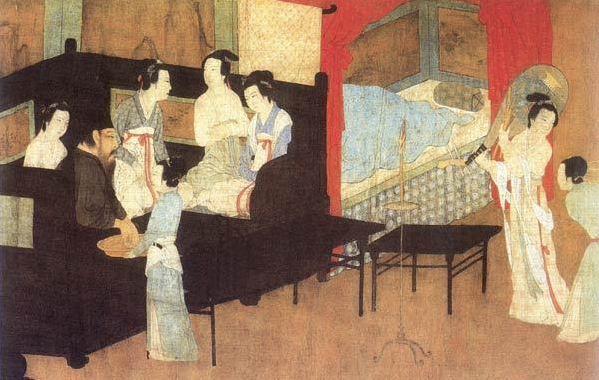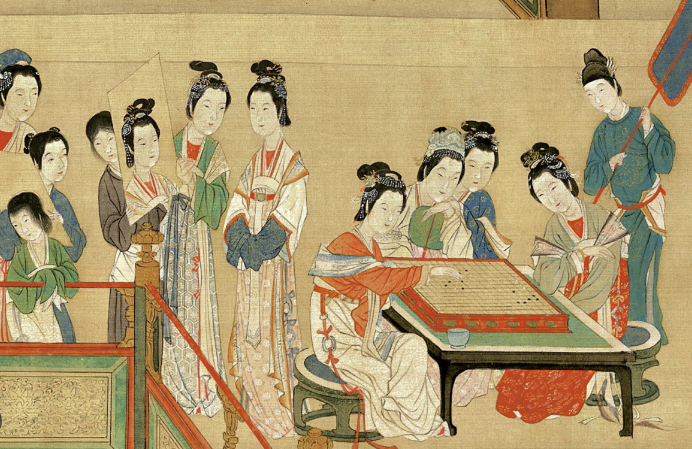In ancient China, social status dictated Hanfu’s materials, colors, and designs, symbolizing hierarchy.
Historical Overview of Hanfu
The journey of Hanfu, traditional Chinese attire, unfolds over millennia, mirroring China’s rich history. Originating in the Han Dynasty, Hanfu has evolved, reflecting cultural shifts and dynastic changes. Each era’s rulers and prevailing philosophies significantly shaped Hanfu’s style and significance.
Evolution of Hanfu Through Dynasties
During the Zhou Dynasty, Hanfu began as simple, loose-fitting garments, symbolizing societal harmony. In the Han Dynasty, it became more elaborate, with the introduction of the ‘shenyi’, a type of robe, marking a blend of practicality and aesthetics. The Tang Dynasty saw a fusion of foreign influences, as trade and cultural exchanges flourished. Hanfu from this period often featured vibrant colors and intricate patterns, reflecting the Tang’s cosmopolitan nature. The Song Dynasty introduced a more conservative style, with subdued colors and simpler designs, mirroring the government’s emphasis on Confucian values and social order.

Social Hierarchy and Dress Codes in Ancient China
In ancient China, Hanfu wasn’t just clothing; it was a symbol of social hierarchy. Emperors wore yellow, a color reserved solely for their use, often adorned with dragon motifs, exemplifying supreme authority. High-ranking officials and nobility had specific dress codes, often featuring luxurious fabrics like silk and patterns indicating their rank and status. Commoners, bound by law and economic constraints, wore simpler Hanfu, typically made of hemp or cotton, in plain colors. These distinctions in dress codes were not just fashion statements but reinforced the societal structure and order.
The evolution of Hanfu showcases the interplay between politics, culture, and social norms in ancient China. From the sumptuous silks of the nobility to the humble hemp of the commoners, Hanfu was more than attire; it was a reflection of the rich tapestry of Chinese history.
Influence of Social Status on Hanfu Styles
In ancient China, Hanfu was not just clothing but a reflection of one’s social standing. The intricate relationship between social status and Hanfu styles was evident in every fold and color of the fabric.
Distinctive Features of Hanfu Among Different Social Classes
For the nobility, Hanfu was a canvas to display wealth and power. Emperors and high-ranking officials wore robes with elaborate designs, often featuring dragon motifs and embroidered with gold and silver threads. A notable example was the ‘pao’, a robe-like garment, which was exclusive to the royal family and senior officials. These garments often used silk, a luxurious and expensive material, showcasing the wearer’s high status.
In contrast, commoners adhered to a more modest style. Their Hanfu, primarily made of coarse materials like hemp, reflected their lower economic and social position. The styles were simpler, with fewer layers and decorations. Color also played a crucial role. While the elite could adorn themselves in vibrant hues, commoners were often restricted to plain colors, with brighter colors being legally reserved for higher classes.
Materials and Colors
The fabric and color of Hanfu were clear indicators of social status. Silk, known for its luster and texture, was a status symbol in itself. Only the wealthy could afford silk garments, making it a clear demarcation of wealth. Colors too held significant meaning. Yellow, reserved for the emperor, symbolized imperial power. Purples and reds, often seen in the attire of nobility, indicated high rank and respect. Meanwhile, commoners were limited to undyed or lightly dyed fabrics, further emphasizing the social divide.
Cultural Significance of Hanfu in Social Stratification
Hanfu, the traditional Chinese attire, significantly impacted the social fabric of ancient China. It was not merely a fashion statement but a symbol of social order and hierarchy. The specific styles, fabrics, and colors of Hanfu varied greatly between different social classes, vividly illustrating the prevailing societal norms and values.
Rituals and Ceremonies
Hanfu played a critical role in rituals and ceremonies, serving as a visual marker of status and hierarchy. During imperial ceremonies, officials wore Hanfu with specific insignias indicating their rank and position. For instance, at the annual Imperial Examination, a system that determined governmental positions, successful candidates wore distinct Hanfu to celebrate their new status. The fabric, color, and embroidery of these garments varied based on their new ranking.
Weddings: The Hanfu worn at weddings was particularly symbolic. Brides often wore red Hanfu, elaborately embroidered with motifs like the phoenix, symbolizing auspiciousness and good fortune. The richness of the fabric and the intricacy of the designs were directly proportional to the family’s wealth and social standing.
Religious Ceremonies: In religious ceremonies, the Hanfu worn by priests and monks was distinct, often simpler and in colors like yellow or brown, signifying their detachment from worldly desires and their spiritual devotion. These garments were devoid of the luxurious embellishments seen in the attire of the nobility, reflecting their commitment to a life of simplicity and spirituality.
Symbolism in Hanfu
The symbolism in Hanfu designs and colors was a subtle yet powerful tool for conveying social rank and privilege. The dragon motif, for example, was exclusive to the emperor and represented supreme power and authority. The number of claws on the dragon motif could even indicate the specific rank within the royal family. Similarly, phoenix motifs, often seen in the attire of noblewomen, symbolized grace and high virtue.
Colors as Status Symbols: The use of color in Hanfu was a direct reflection of one’s social standing. Yellow, reserved for the emperor, symbolized ultimate power and was forbidden for use by commoners. Nobility often favored purples and deep blues, colors that were expensive to produce and thus signified wealth and high status. In contrast, commoners wore Hanfu in muted tones, as laws restricted them from wearing bright colors.
Fabric and Quality: The quality of the fabric further accentuated social differences. The nobility had access to the finest silks, which were a luxury beyond the reach of the commoners. This disparity in fabric quality visibly demarcated the social hierarchy.
Hanfu was much more than traditional attire, it was a key element in the social stratification of ancient China. Its varied styles, colors, and fabrics in different social contexts and ceremonies not only reflected but also reinforced the hierarchical structure of society. Understanding the cultural significance of Hanfu thus provides a deeper insight into the complex social dynamics and values of ancient China.

Comparative Analysis of Hanfu Across Classes
The Hanfu, a traditional Chinese garment, varied significantly across social classes in ancient China, reflecting the stark contrasts in lifestyle, wealth, and status. This comparative analysis delves into the differences between the Hanfu worn by the nobility and commoners, highlighting how wealth and power influenced its design and production.
Noble vs Commoner Hanfu
The differences between noble and commoner Hanfu were profound, encompassing aspects such as fabric quality, color richness, and decorative elements.
| Aspect | Noble Hanfu | Commoner Hanfu |
|---|---|---|
| Fabric Quality | Fine silks, often imported | Coarser fabrics like hemp or cotton |
| Colors and Dye Quality | Vibrant, expensive dyes; unique colors | Muted, cheaper dyes; limited palette |
| Decorations | Gold and silver embroidery; precious stones | Minimal decorations; simplistic designs |
| Symbolism | Dragons, phoenixes, symbols of power | Basic, non-symbolic patterns |
| Variety and Complexity | Multiple layers, intricate designs | Single layer, simpler cuts |
This table succinctly captures the stark contrasts in Hanfu across social classes, offering a clear visual representation of the disparities in ancient Chinese society.
Influence of Wealth and Power on Hanfu Designs
Wealth and power played critical roles in the design and aesthetics of Hanfu. Nobles, with their access to resources and their need to display their status, often commissioned bespoke Hanfu with luxurious materials and intricate designs. They used their clothing as a tool for displaying wealth and reinforcing their social standing. The opulence of their attire was a clear indicator of their high social rank.
On the other hand, commoners’ Hanfu was practical and modest. Limited by economic constraints, their garments were often self-made, functional, and without the lavish embellishments seen in noble attire. The simplicity of commoners’ Hanfu was not just a matter of fashion but a reflection of their place in society.
In summary, Hanfu served as a clear indicator of one’s social status in ancient China. This comparative analysis underscores the profound impact of wealth and social hierarchy on the fashion of the era. The stark differences in the Hanfu of nobles and commoners illustrate the societal divide, offering insights into the cultural and social dynamics of the time.